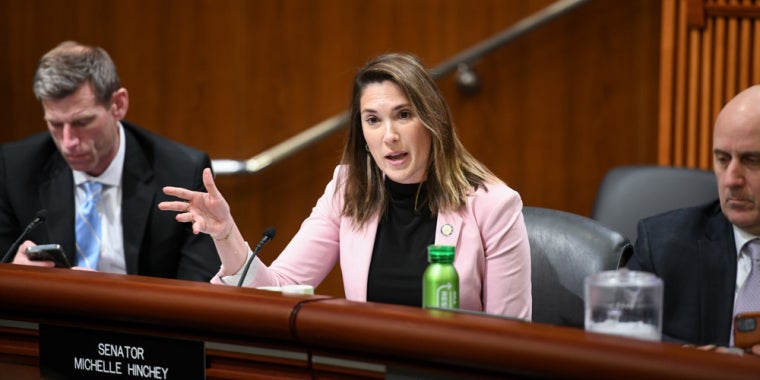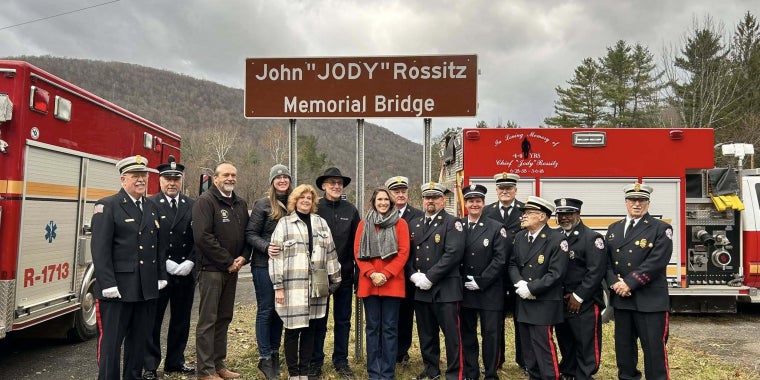
Assemblymember Shrestha and Senator Hinchey find no safety flags on proposed energy storage project in the Town of Ulster
September 3, 2025
KINGSTON, NY: Assemblymember Sarahana Shrestha and Senator Michelle Hinchey, who represent the Town of Ulster, the Town of Hurley, and the City of Kingston, provide the following comment and answers to some of the commonly asked questions regarding the proposed 250MW Terra-Gen energy storage project.
“It’s increasingly common for the fossil fuel industry to use isolated, unrelated incidents to evoke people’s worst fears about energy storage projects,” said Shrestha, “Our office has received a lot of questions in the past several months about the proposed 250MW project in the Town of Ulster, specifically whether it poses the kind of safety risks people should be worried about—and we’ve done our due diligence to provide the short answer, which is no. Our office is never a cheerleader for for-profit corporations, but the reality is that until we invest in public goods, some of the critical services we need will need to be provided by for-profit companies—and our job at this time is to make sure that the state has strong guardrails to protect people’s best interests. In this case, what’s important is that New York has fairly advanced fire codes and standards these types of projects must follow, which means we’re not talking about the kind of scenarios that would result in warehouse fires such as the ones we’ve seen in California that were caused by outdated fire safety standards. It’s normal, of course, for people to have questions, and they’re right to want answers, since the state is still in its early stages of building up energy storage capacity, so people aren’t very familiar with them yet. And needless to say, when the involved developer is a for-profit corporation, it creates an added layer of doubt, but generally we found that incomparable examples were being cited as reasons for safety concerns, so we want to make sure we at least get the right information out, so that people can make better-informed decisions. The reality is that fossil fuel, both directly and indirectly, poses direct and far bigger threats to our health and safety, and if we don’t transition to renewables, our choices are either sticking with fossil fuel or building out nuclear—and energy storage is a critical part of the renewable ecosystem we need to build. Additionally, the Hudson Valley is strategically located to host storage projects, and we’re also glad that the New York Power Authority has announced some publicly-owned storage projects it intends to build as well. I hope the answers we have provided are helpful to our constituents. In the meantime, we hope to see a strong and detailed community benefits agreement for this project.”
“If we are to truly confront the climate crisis, we must step forward with open minds and make decisions grounded in facts,” said Hinchey, ”And the fact is that New York and America have been late to the game when it comes to renewable energy infrastructure, including battery storage. These are investments we need. That said, above all else, we must ensure that these projects demonstrate that they are safe for the communities in which they are sited. Terra Gen has done a significant amount of due diligence, and I have confidence in our towns, local leaders, and NYSERDA to ensure that the best interests of our communities are always taken into account. With full respect for approval processes and local control, I believe we must look to the future and embrace safe technologies for the sake of our energy security and the greater public good. I will work with my colleagues in the state government to guarantee transparent, effective oversight and have faith that our local leaders will do the same.”
Is there a reason to believe the proposed Terra Gen project is unsafe?
No. The proposed Terra Gen project is a typical modern battery storage project that is subject to New York’s advanced fire codes and standards, which requires, among other things, the following:
- Modular enclosure design with required minimum spacing pursuant to the fire code, ensuring any fire incident doesn’t spread beyond each container
- First-responder training and emergency response planning
- Large scale fire testing (LSFT) to demonstrate conclusively that fire will not spread beyond a container. Please note: LSFT is a much stronger requirement than UL-9540A, which has been used in the US to measure energy storage safety.
- Fire and life safety systems to be inspected, tested, and maintained at intervals required by applicable National Fire Protection Association (NFPA) standards. The Inspection, Testing, and Maintenance (ITM) reports must be kept on file by Terra-Gen for 5 years and the facility and the reports can be inspected at any time. If Terra-Gen is found to be not performing up to the required code, its operating permit can be revoked.
- In the event of power outage, a backup power source is required in accordance with NFPA 855 to ensure cooling, ventilation, and fire suppression measures are not affected
There has never been an uncontained fire incident at facilities that follow the state’s fire codes and standards. Additionally, the project will use lithium iron phosphate (LFP) batteries, which are the safest type of batteries with the least risk of thermal runaway, unlike other types of batteries with higher risks, such as nickel manganese cobalt, that have been involved in prominent fire incidents. Overall, the risk of an uncontained fire at the facility is unlikely, and the risk of a regular fire at a neighbor’s house from everyday appliances is significantly higher.
Why is battery storage important?
Battery storage facilities store excess renewable energy and dispatch it as needed, without which we cannot reliably use renewable energy sources. If we cannot get enough storage facilities running, the alternative is to build modular nuclear facilities or fracked gas pipelines across the state, which are significantly worse options. Recent studies show that the use of battery storage reduces the use of coal and oil, which leads to less air pollution and slower climate change. Energy storage also helps lower overall energy costs by reducing the need to purchase expensive backup power.
What is the benefit of having a battery storage facility of this size at this location?
New York State has a goal to install 6 gigawatts of energy storage by 2030, and in order to meet this goal, storage facilities of this size (around 250 MW) will have to increasingly exist across the state. As a region that is not particularly fruitful for solar or wind, the Hudson Valley can play a strategic role by hosting storage facilities because it is located between the more rural parts of the state where energy is generated and the more downstate areas where most energy is consumed. In this particular case, proximity to a Central Hudson substation would allow the energy to easily connect to the grid.
Is the Moss Landing battery storage facility in California, where a prominent fire incident occurred, comparable to the proposed Terra Gen battery storage facility in the Town of Ulster?
No. Unlike the proposed Terra Gen project, the Moss Landing facility was not designed per New York’s fire codes and standards. As such, it housed a large number of batteries in a warehouse-like repurposed turbine hall, creating a volatile environment for any small fire to spread very quickly. It also used nickel manganese cobalt (NMC) lithium-ion batteries, which carry a greater risk of thermal runaway and fire compared to lithium iron phosphate (LFP) batteries that are being used at the proposed Terra Gen facility.
Is the explosion at a facility in Arizona comparable to the proposed Terra Gen battery storage facility in the Town of Ulster?
No. The 2019 explosion in Arizona occurred at a site that was built before today’s code that has requirements to mitigate the risk of explosion and provide proper training to first responders. Per today’s requirements, the proposed Terra Gen facility must employ gas detection and ventilation systems to prevent gas build-up within the enclosure, and also provide proper training to first responders. There has been no explosion at a facility that follows this code. Additionally, risk of explosion is higher in indoor facilities, such as the Arizona one, whereas the proposed project is outdoors. The risk of a gas explosion is significantly higher at a home than it is at a BESS facility that follows today’s code.
Would this project contribute to pollution?
No. Under normal operations, a battery storage of this type does not release hazardous gases. In the case of fire incidents within an enclosed container, the correct response is to let the fire die out within the container, as opposed to dousing it with water. Energy storage projects in general have a net negative impact on pollution since they help to replace the use of fossil fuel, which directly contributes to pollution, especially in poor, black, and brown communities that have known higher rates of asthma.
Will a contained fire incident leave heavy metal particulates and acid gases in soil, water, and air?
No. This concern is associated with nickel-manganese-cobalt batteries, which this project does not use. However, Terra Gen has committed to conduct site soil and water sampling should a fire occur.
Wouldn’t it be better to have a publicly-owned storage facility instead of one owned by a for-profit corporation?
Yes, but because we have wasted so much time not responding to the climate crisis, we are operating under an exceptionally urgent circumstance where we need to deploy as quickly as possible. The New York Power Authority has also announced plans for publicly-owned energy storage, but it will be too little to meet the needs.
How safe are energy storage projects, broadly speaking?
Major safety incidents at battery storage facilities have historically been rare, affecting less than 1% of the total U.S. capacity. As New York’s more stringent fire standards spread across the country, this rate will reduce significantly over time.
###



